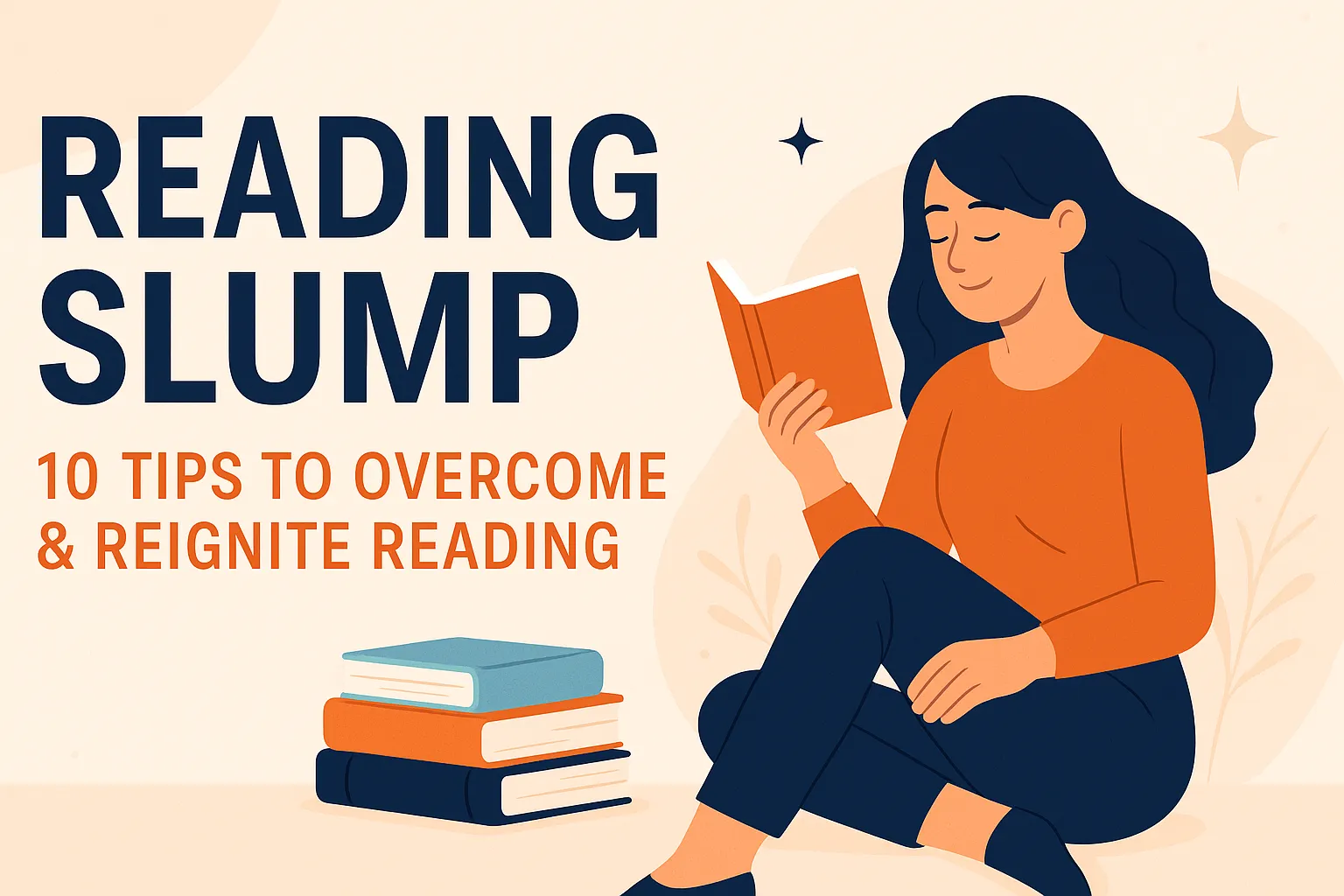Reading Slump: 10 Tips to Overcome & Reignite Reading
Reading Slump: How to Break Free and Reignite Your Love of Books
A reading slump is that infuriating time when the books on your shelf don’t intrigue, your mind drifts in the first page, and even your favorite writers are unable to catch your eye. It befalls all from mere readers to confessed book enthusiasts. The silver lining? Slumps are temporary and vanquishable. Here, you’ll find out what a reading slump is, why it happens, and ten strategies—along with book recommendations and useful tools—to get you turning pages once more.
What Is a Reading Slump?
You’re in a reading slump when you’re losing interest or energy to read even when you usually adore books. It’s as if hitting a brick wall—pages flash by, chapters trudge, and you’re scrolling mindlessly on social media instead of being swept up in a story. Slumps are not a lapse in taste or intelligence; they’re simply your reading pace slowing down. Acknowledging you’re in one is the first step out.
Common Causes of Reading Slumps
- Read an entire series or genre in one go, and you may be drained of creativity.
- Stress & Distraction
Responsibilities in life—work, family, or personal issues—tap mental energies for focused reading.. - Incorrect Book Selection
Reading what is poorly matched to mood or current interest takes away the interest. - Perfectionism
Setting too-high standards (e.g., “This book has got to be life-changing!”) places pressure on and takes away joy. - Exterior Overload
Too many notifications, constant background noise, or poor reading conditions distract.
Understanding what led to your slump allows you to choose the correct approach: sometimes breaking habits, and sometimes breaking genres.
10 Proven Strategies to Overcome a Reading Slump
- Take Small, Manageable Goals
Promise yourself only five pages or ten minutes a day so the habit can start again. - Switch Genres
If you read thrillers, try a lighter memoir or graphic novel for the change. - Switch Formats
Give audiobooks or e-readers a chance—sometimes a different medium reignites interest. - Create a Reading Ritual
Designate a cozy nook, brew tea, or play soft music to signal it’s reading time. - Join a Book Club or Buddy Read
Social accountability and lively discussions boost motivation and curiosity. - Use the Five-Minute Rule
If after five minutes you’re still not engaged, allow yourself to switch books guilt-free. - Revisit Old Favorites
Re-reading a comforting or favorite childhood book will get you back to why you started reading in the first place. - Track Your Progress
Mark down pages or chapters in a notebook or app—watching the number increase is somehow motivating. - Make Reading a Challenge
Attempt a “book bingo” or genre-binging challenge to add fun to your reading life. - Avoid Distractions
Place your phone on Do Not Disturb or use apps restricting social media during reading.
Book Recommendations to Jumpstart Your Reading
- The Night Circus by Erin Morgenstern — A poetic, evocative fantasy that’s a pleasure to immerse yourself in.
- Educated by Tara Westover — A riveting memoir of determination and the life-changing force of books.
- Dune by Frank Herbert — Vast world-building that takes hold of your imagination from the first page.
- The Alchemist by Paulo Coelho — Brief, fable-like path of pursuing your dreams.
- Project Hail Mary by Andy Weir — Pace and humor and science fiction with lots of risk.
- The Song of Achilles by Madeline Miller — Beautiful, emotional retelling of Greek mythology.
- The Hobbit by J.R.R. Tolkien — Classic adventure that’s just as charming the second time through.
Using Tools and Trackers to Stay Motivated
- Reading Apps: Apps like Goodreads or Bookly enable you to monitor progress, set goals, and see statistics from the community.
- Physical Trackers: A simple habit tracker or bullet journal page can highlight your reading streak.
- Timers & Focus Tools: Implement the Pomodoro Technique (25 minutes read, 5 minutes break) or utilize software that blocks social media for a set amount of time.
- Accountability Partners: Share weekly reading targets with a friend or on social media to create external motivation.
Conclusion
Reading slumps are temporary pauses, not dead ends. By understanding why you’ve stalled, experimenting with different formats or genres, and employing small—but powerful—strategies—supported by book recommendations and simple tracking tools—you’ll soon feel the thrill of turning pages again. Pick one tip, choose a book, and let your next chapter begin.
FAQ
Why am I having a reading slump?
A reading slump can be caused by burnout, stress, incorrect book selection, perfectionism, or outside distractions. Sit down and think through what might work for you and try some things such as setting small goals or genre changes.
How long does a reading slump last?
There’s no time clock—some slumps last a few days, some weeks. The trick is to begin with short, doable sessions of reading and try until you regain steam.
Could changing to listening to audiobooks possibly work?
Audiobooks engage several senses and can make stories feel fresh. Listening to them on your commute, during your exercise, or household chores might allow you to get back into the habit so much that you find yourself wanting to re-read the hardcover again.




